LA Times: Feral cattle terrorize hikers and devour native plants in a California national monument
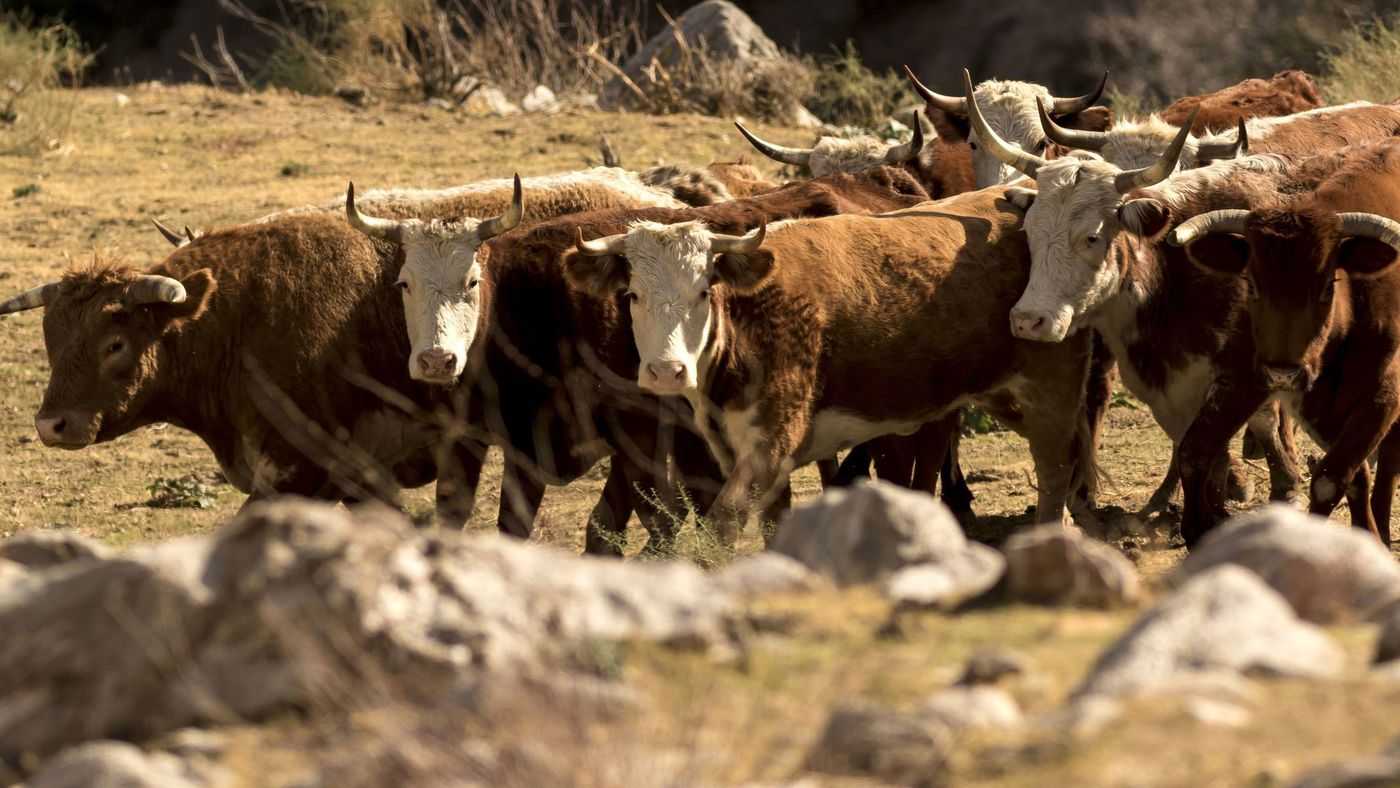
An estimated 150 unbranded feral bulls and cows roam the new Sand to Snow National Monument near Palm Springs. (Clinton Christensen / Courtesy of the White Water Preserve)
By Louis Sahagun | Mar 02, 2018
Sand to Snow National Monument is a quiet place — its mountainous high desert and cascading streams a draw for those seeking panoramic views, tranquility and solitude.
But on a recent morning, the serenity was ruined by a menacing bellowing, making it clear passing hikers weren’t alone.
On a ridgeline near a popular stretch of the Pacific Crest Trail, five feral bulls, each the size of a small car, were snorting, stomping and pawing the ground — postures indicating they were ready to charge.
The bulls gazed down on human observers; some lowered their footlong horns. Then they lumbered on, trampling the trail and devouring native vegetation in one of California’s newest national monuments.
Peering through binoculars, Terry Anderson, a board member of the Society for the Conservation of Bighorn Sheep, saw a species he doesn’t consider worthy of conservation in the wild lands near Palm Springs.
“They are part of a herd of at least 150 that’s ripping up this monument and scaring the heck out of folks who cross paths with them,” he said. “They also can transmit disease to native bighorn sheep. So, they need to be removed — and I’m all for lethal removal. They don’t belong here.”
Signs posted at trailheads warn of an additional danger. A pack of pit bulls has been killing and eating wild cattle in this nature sanctuary framed by mountains and watered year-round by a river roiling through overlapping biological zones including sandy desert, boulder fields, grasslands and forests.
Jack Thompson, desert regional director of the adjacent Whitewater Preserve, roughly 10 miles northwest of Palm Springs, was only half-kidding when he said, “It’s Jurassic Park just a two-hour drive east of downtown Los Angeles.”
The conflicts have become a local crisis not just because of the wild cattle and dogs, but also because the number of visitors and hikers in the Mojave Preserve and Sand to Snow National Monument has increased dramatically since it received federal designation in 2016, up from 90,000 to 148,000 last year.
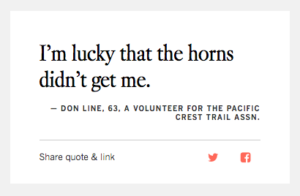 There are cattle, including some that are wild, spread across California’s millions of acres of open lands. But the size of this feral herd and its proximity to one of the most popular wilderness trails in the state make it a vexing problem for federal land managers. Because of a lack of cellphone service in portions of these canyon lands, it wouldn’t be easy to summon help in the event of a stampede or goring.
There are cattle, including some that are wild, spread across California’s millions of acres of open lands. But the size of this feral herd and its proximity to one of the most popular wilderness trails in the state make it a vexing problem for federal land managers. Because of a lack of cellphone service in portions of these canyon lands, it wouldn’t be easy to summon help in the event of a stampede or goring.
Conservation groups including the Pacific Crest Trail Assn. are urgently calling on federal land managers to take action.
The U.S. Forest Service and Bureau of Land Management, which co-manage the monument’s 101,000 acres as wilderness, said they plan in March to dispatch a team of federal land managers, biologists and representatives of the nearby Morongo Band of Mission Indians reservation to come up with a strategy and funds to eliminate the unbranded cattle and collarless dogs.
That process, however, could grind on for months because the animals are crossing jurisdictional boundaries of agencies and governments including the Forest Service’s San Bernardino National Forest, the Wildlands Conservancy’s Whitewater Preserve and the Morongo reservation. In addition, any effort to remove the animals must comply with myriad state and federal wildlife regulations.
California Fish and Wildlife authorities were unsuccessful in an attempt this year to lure the dogs into traps baited with food.
“At this time, we are in the fact-finding stage, so we have little details on the history of these animals and their exact whereabouts,” said Sarah K. Webster, a spokeswoman for the BLM state office in Sacramento.
“The BLM is working with its partners to come up with a solution,” she said. “If someone should see or come in contact with any of these animals, please do not approach them.”
In the meantime, an estimated 150 feral cattle — roughly one-third of them bulls weighing as much as 2,000 pounds — are reshaping scenic canyons and slopes with their appetites and hooves. They are carving new trails and wiping out grasses that anchor soil against erosion. They have knocked over willows that are home to birds, including federally endangered least Bell’s vireos, and contaminated the watershed with their droppings.
They have also charged at human visitors who venture too close.
The experience stays with you.
Don Line, 63, a volunteer for the Pacific Crest Trail Assn. and tour guide in the monument, was nearly gored by a bull last month.
It is possible here to see in a single day bears, mountain lions and coyotes — all against the stirring backdrop of some of the steepest slopes in the state. But turning a corner along a trail to find yourself face to face with a raging bull is not for the casual nature lover.
The beast exploded into life just 30 feet away from Line, who was conducting trail maintenance. It charged at him with its horns around the height of his belt buckle. Line said he grabbed a fence post he had been carrying and swung it like a baseball bat, hitting the bull in the side of the head.
The bull fell, then got up and continued down the trail at a slow trot.
“It was all over in a few seconds,” he said. “I’m lucky that the horns didn’t get me.”
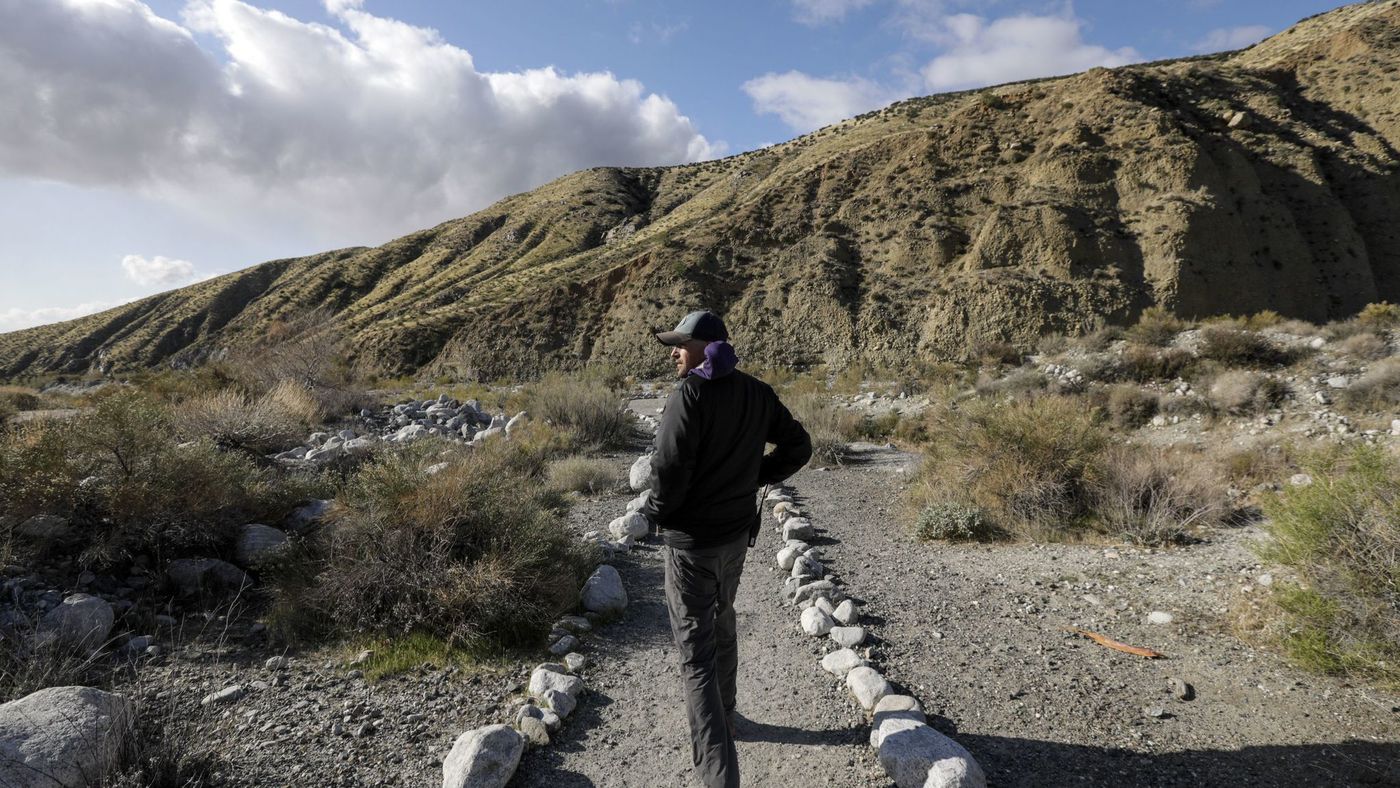
Jack Thompson, desert regional director of the Whitewater Preserve, on the trail. (Irfan Khan / Los Angeles Times)
The feral cattle are believed to be descendants of herds that grazed ranchlands throughout the region a century ago. Until recently, small numbers of them were believed to roam the rugged terrain high in the San Bernardino and San Jacinto mountains.
About four years ago, however, dozens settled in lower elevations. Prolonged drought, conservationists say, forced the herd to take an even bigger bite out of the lowland’s sagebrush and grass.
“It’s not uncommon for these unbranded cows to wander out of the mountains onto the Morongo reservation,” said Michael Fisher, a spokesman for the tribe headquartered about seven miles west, “where they cause damage.”
Cattle grazing remains common across California’s public lands, and branding and tagging have generally made it easy to identify their owners when animals wind up where they shouldn’t.
But with no one claiming ownership of this herd, it will take time to remove them from a diverse terrain that’s home to imperiled wildlife, such as the California desert tortoise, arroyo toads and Nelson’s bighorn sheep, which thrive on the monument’s cliffs and rocky outcroppings.
“The destruction to natural habitat is widespread and heartbreaking,” Thompson said. “An eradication plan can’t come soon enough.”
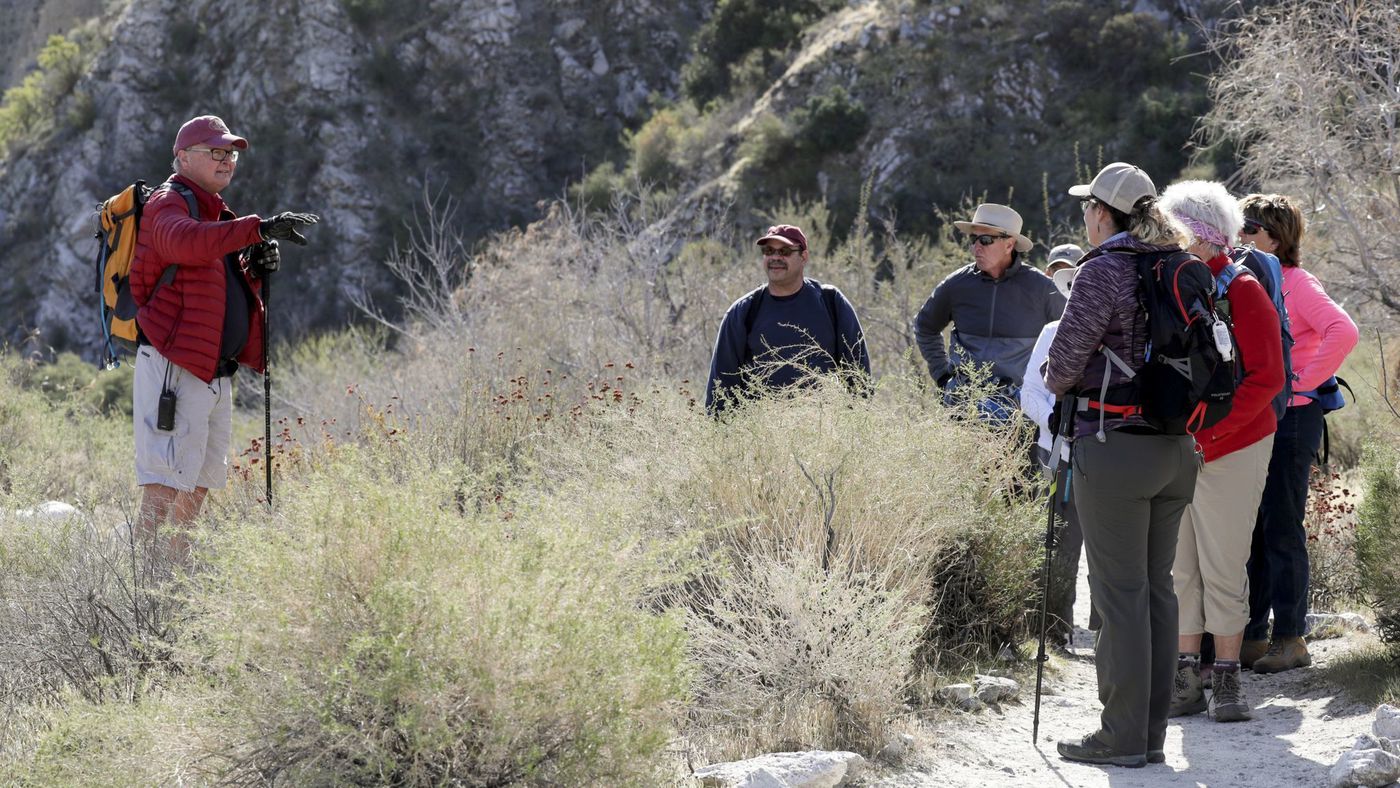
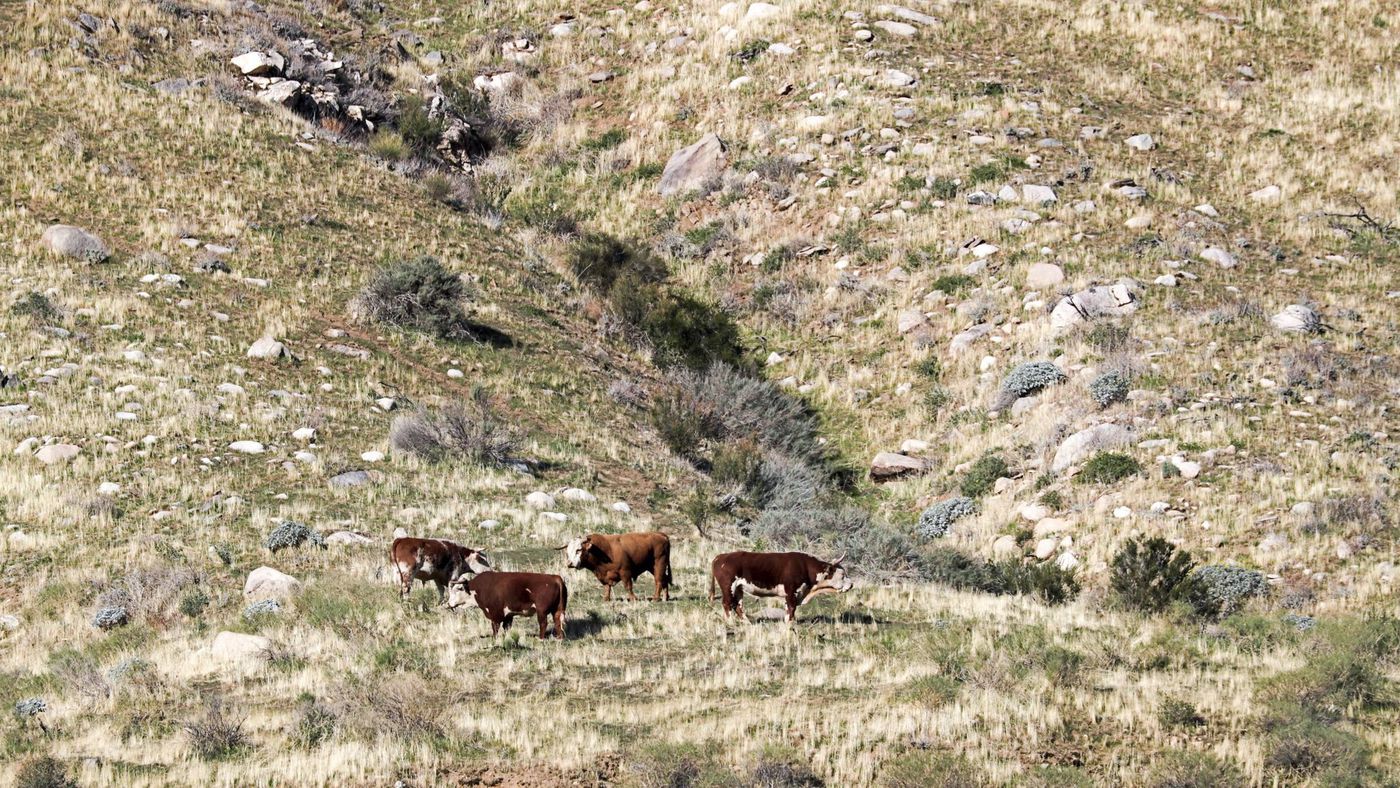
Pretty sad commentary.
Where is all those gun toting BLM and Forest Service Rangers so eager to roundup branded cattle and sell them? James Stotts
Seriously city people from LA are real citiots. I have seldom read such combined stupidity in one article. Just goes to show how completely disconnected from nature even the city raised wildlife biologists are.